10 Collectible Military Posters and Recruitment Ads From Different Countries
Throughout history, military posters have served as powerful tools for recruitment. They are not just advertisements, but reflections of a nation’s values, struggles, and hopes during wartime. From bold imagery to striking slogans, each poster tells its own story. These posters have become highly sought-after items for collectors, offering a glimpse into the past.
This post may contain affiliate links, which helps keep this content free. Please read our disclosure for more info.
I Want You for U.S. Army – United States
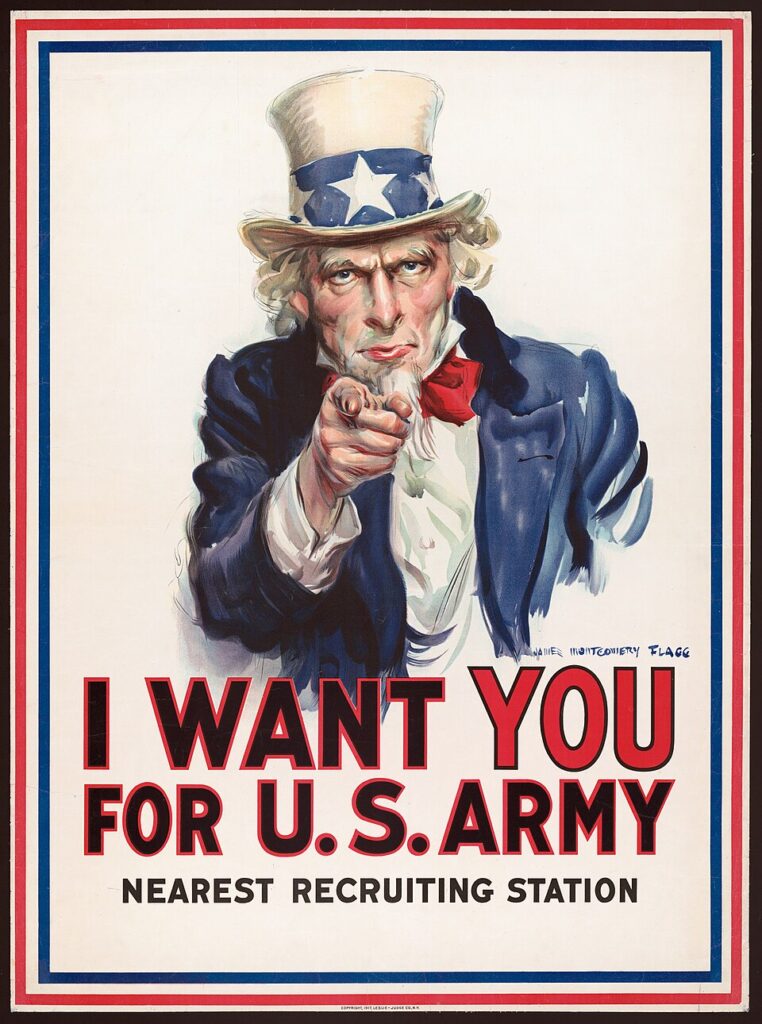
This famous recruitment poster, created by James Montgomery Flagg, first appeared in 1917 during World War I. It features the iconic image of Uncle Sam pointing directly at the viewer. The poster was used throughout World War I and World War II to encourage Americans to enlist. The estimated market value for an original poster ranges from $5,000 to $10,000 depending on its condition. Its direct call to action and patriotic message have made it one of the most recognized posters in history.
The image of Uncle Sam remains a symbol of U.S. patriotism and duty. Flagg’s design captured the urgency of wartime enlistment. The poster was widely reproduced, often appearing in recruitment offices and public spaces. Over time, it has become a highly sought-after collectible for history and art enthusiasts. Today, this piece of American history continues to hold significant cultural value.
Loose Lips Might Sink Ships – United States
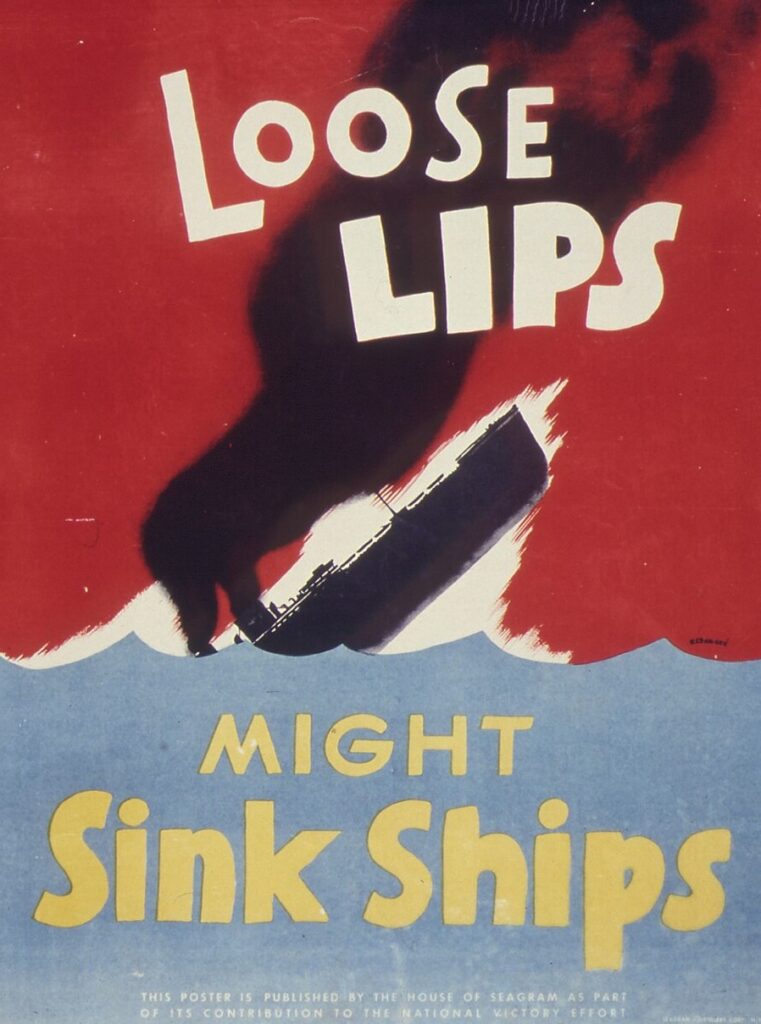
This World War II poster was part of a campaign aimed at preventing espionage by reminding people not to reveal sensitive information. It was designed by the U.S. Office of War Information and distributed to both military personnel and civilians. In excellent condition, the value of an original poster can range from $3,000 to $6,000. The direct message was clear: careless talk could undermine the war effort. It remained one of the most effective wartime safety campaigns in American history.
The phrase Loose Lips Might Sink Ships became a powerful symbol of wartime secrecy. It emphasized the importance of protecting military strategies from enemy spies. This simple but impactful design has made it an iconic piece of World War II propaganda. Over the years, it has become a staple in historical poster collections. Today, it serves as a reminder of the homefront efforts during the war.
Your Country Needs You – United Kingdom
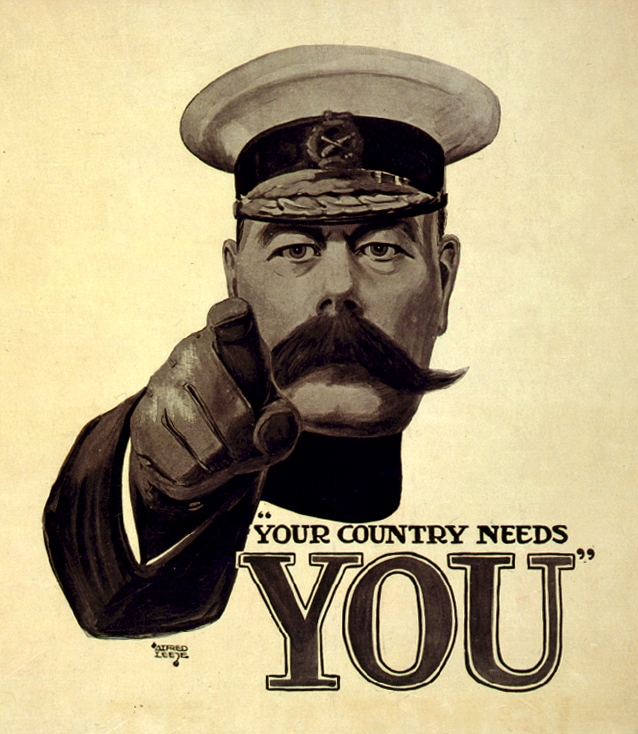
This British World War I poster, designed by Alfred Leete in 1914, features Lord Kitchener, the Secretary of State for War. The striking image of Kitchener pointing at the viewer was meant to inspire men to enlist. It became one of the most famous recruitment posters in the United Kingdom. The original poster can fetch around $4,000 to $7,000 in the current market. Its powerful design and direct appeal have kept it relevant as a symbol of national duty.
The poster was seen all over Britain, urging citizens to take action during wartime. Lord Kitchener became the face of the British war effort through this iconic image. It was used not only for military enlistment but also as part of national propaganda. Many other countries adopted similar recruitment methods, drawn by the poster’s effectiveness. Its lasting impact on British culture makes it a highly collectible historical item.
French Canadians, Enlist! – Canada
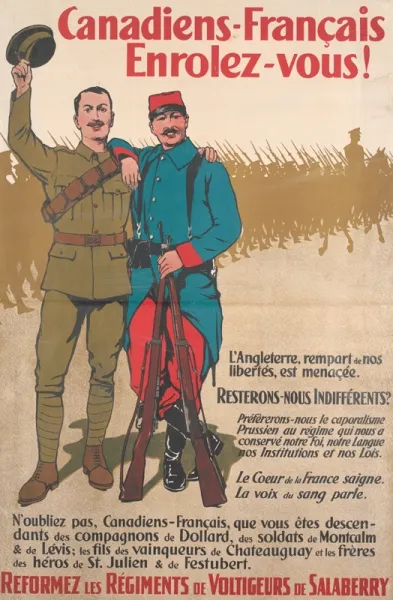
This Canadian recruitment poster, used during World War I, specifically targeted French-Canadian men, urging them to join the Canadian Expeditionary Force. The poster emphasized national pride and the importance of defending not just Canada but also the Allied forces during the war. It depicted a soldier proudly wearing a uniform, calling French Canadians to fulfill their duty. The original poster can be valued at $2,000 to $3,500 depending on its condition.
The French-Canadian recruitment posters were part of an effort to ensure the inclusion of French-speaking Canadians in the military, as their participation was essential to Canada’s overall military strength. The appeal was based on both patriotic sentiment and a sense of duty to the British Empire. Many French Canadians joined the military, and this poster played a key role in motivating them to enlist. Today, it remains an important artifact of Canada’s contribution to World War I and is a highly sought-after piece in military history collections.
We Can Do It! – United States
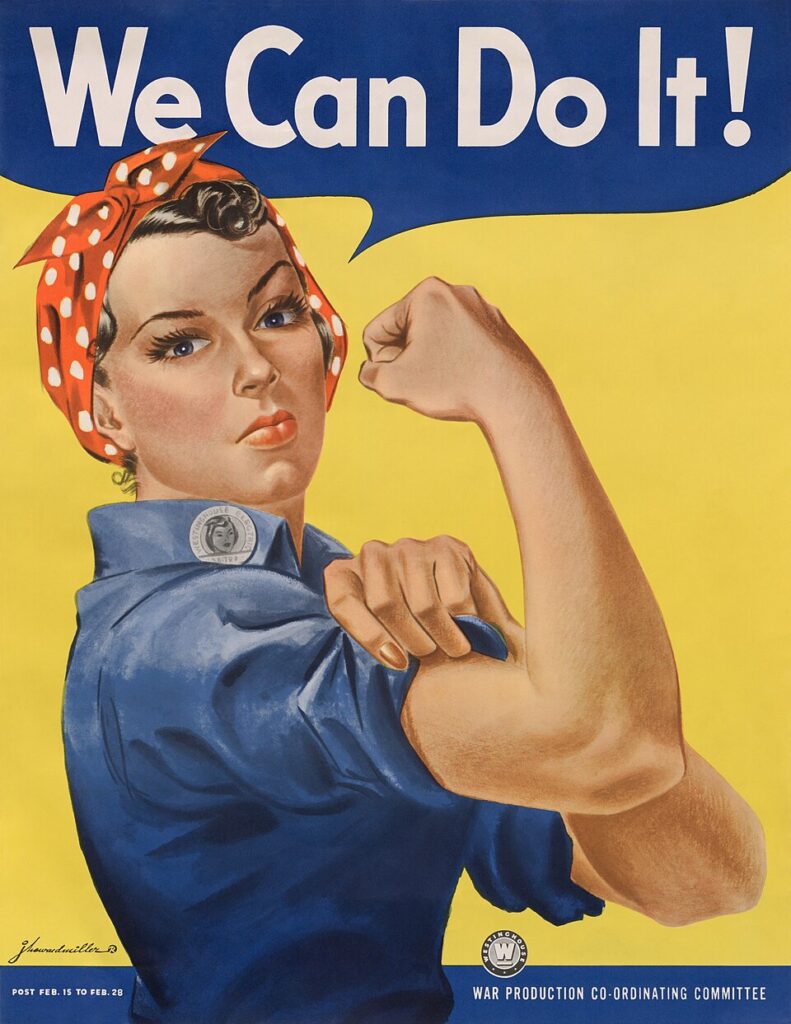
Created by artist J. Howard Miller in 1943, this poster features a strong woman flexing her arm and was used to promote female participation in the wartime workforce. It became a symbol of women’s empowerment during World War II. The poster, often associated with the Rosie the Riveter character, has an estimated value of $3,000 to $5,000 in original form. Its appeal lies in its bold, simple design and powerful message of strength and independence. The We Can Do It! slogan encouraged women to contribute to the war effort by taking on roles in factories and other essential industries.
The poster became a key part of the U.S. wartime propaganda machine, rallying women to work in support of soldiers. It helped change the perception of women in the workplace and served as a call to action during the labor shortage of the war. Today, the Rosie the Riveter image continues to be a symbol of women’s strength, independence, and resilience. It is frequently reproduced and remains one of the most recognizable symbols of World War II. This iconic image is highly prized by collectors for its cultural and historical significance.
The Empire Needs Men! – Britain
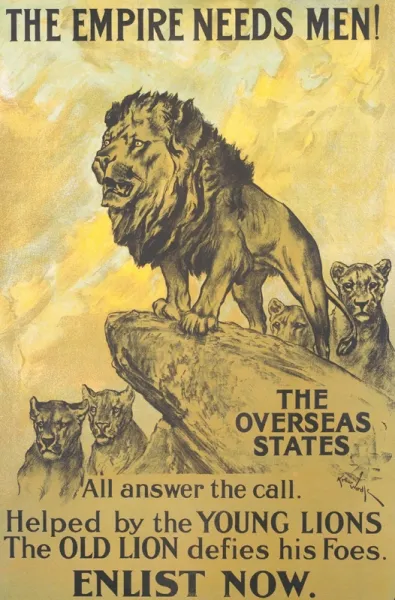
This British recruitment poster was designed during World War I to encourage men to enlist in the military service. Featuring bold text that reads The Empire Needs Men! it was used to appeal to national pride and the call to defend the British Empire. This poster emphasized the global scale of the war and the need for soldiers to protect British territories worldwide. The original poster, depending on its condition, is valued at around $1,500 to $2,500 in today’s market.
The poster’s direct appeal to the Empire’s loyal citizens made it effective in rallying support for the war effort. It targeted young men who might not have initially considered military service but were moved by the urgency of the Empire’s needs. The message was clear and persuasive, contributing significantly to the recruitment efforts of the British military during World War I. Today, this poster is a key piece of British wartime propaganda and remains an important collectible.
Buy War Bonds – United States
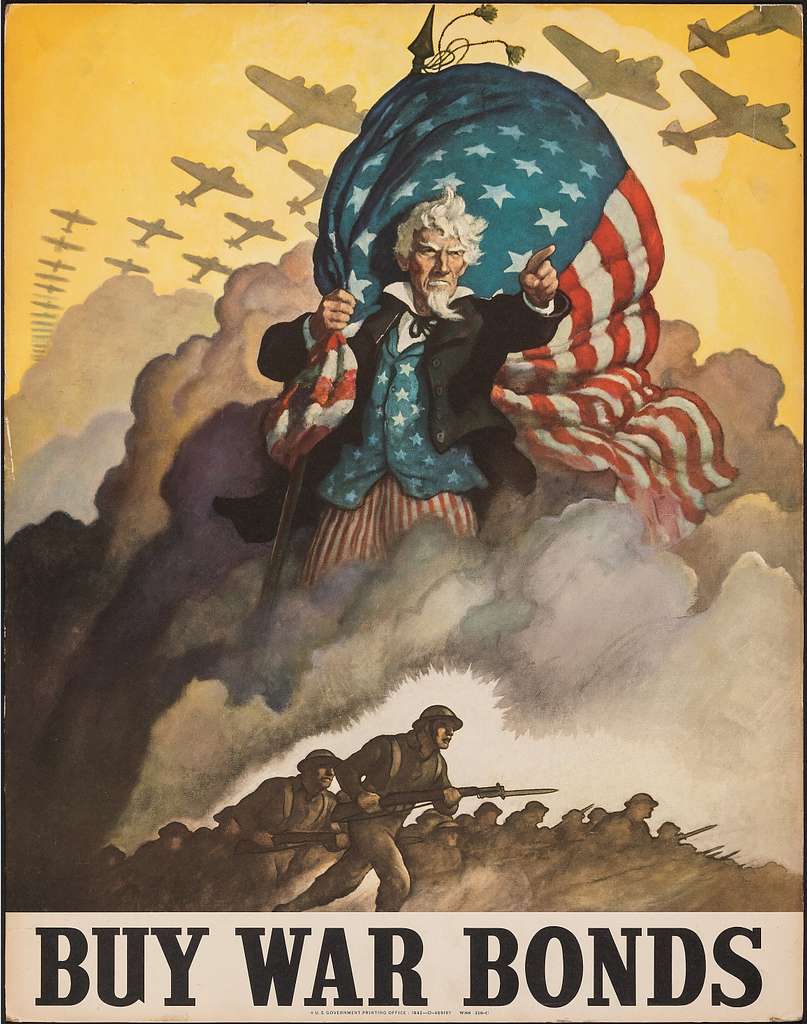
This World War II poster was designed to encourage American citizens to purchase war bonds to support the U.S. military and economy. It features a patriotic family, with the slogan urging citizens to invest in the country’s victory. The poster is valued between $1,500 and $3,000 in original condition. War bonds were critical to funding the U.S. military effort and were sold to civilians as a way to support the war financially. This poster became a vital tool in raising funds and boosting morale on the homefront.
The U.S. government launched several campaigns to promote war bonds, and this poster played a key role in that effort. It portrayed the idea that every citizen could contribute to the war effort, even if they were not serving in the military. The simple yet powerful message resonated with Americans, encouraging them to purchase bonds as a symbol of their support. The design has since become a historical reminder of the sacrifices made on the homefront. Today, it is a valuable piece of wartime propaganda.
Victory Begins at Home – United States
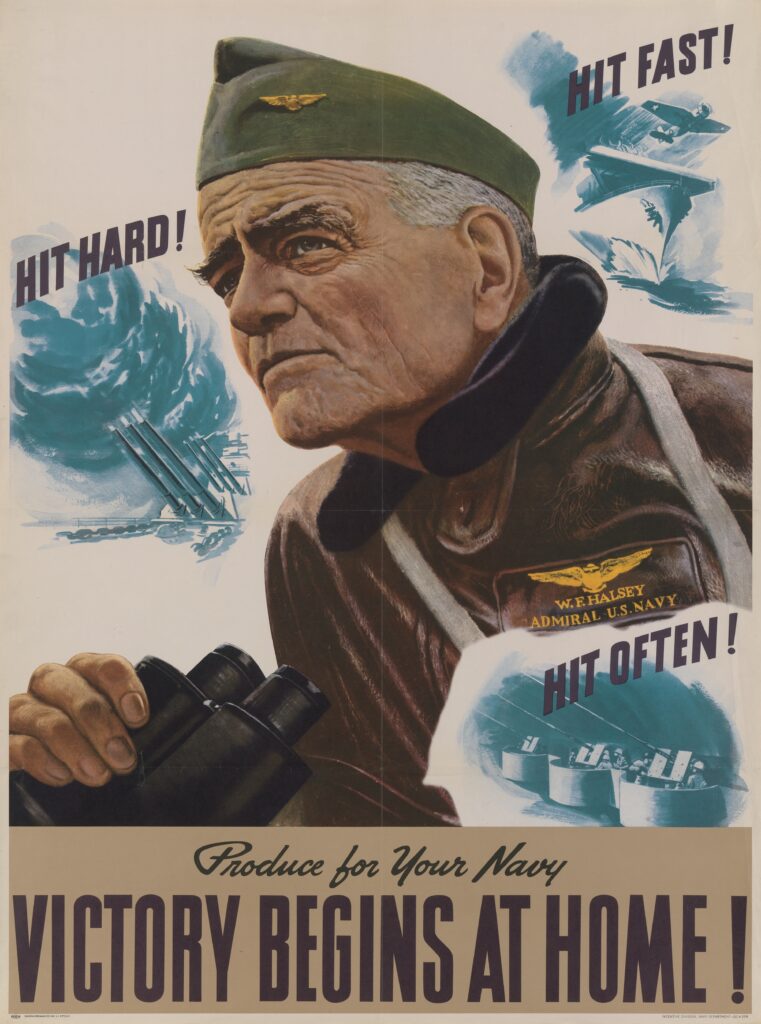
This World War II poster was aimed at reminding citizens that they could support the war effort from the homefront. The message encouraged Americans to conserve resources, grow their own food, and participate in war bond drives. The estimated value of an original poster is between $1,000 and $2,000. The design, which depicts an American family working together, emphasizes the collective responsibility of all citizens. It helped reinforce the idea that the war effort was a national task, with everyone playing a role.
The poster was part of a larger campaign that included messages about saving energy, recycling, and volunteering. It encouraged a sense of unity and shared purpose among Americans during a time of global conflict. The message Victory Begins at Home became a rallying cry for civilians, urging them to do their part. This simple, effective poster remains a valuable collectible for those interested in wartime history. Its legacy as a reminder of the homefront effort has made it a sought-after item in military memorabilia collections.
Who Will Take this Uniform, Money and Rifle? – India
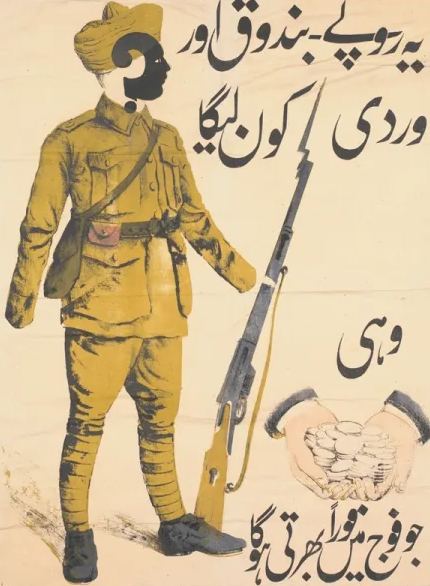
This poster was used in British India during World War I to recruit soldiers for the British Army. The poster’s messageWho will take this uniform, money and rifle? appealed directly to the Indian men’s sense of duty and desire for opportunity. The image depicted a soldier in full uniform with a rifle, symbolizing the honor and financial incentives of military service. Original posters can be valued between $2,000 to $4,000, depending on condition and rarity.
This poster was part of a broader recruitment campaign in British colonies, where the British Empire sought to bolster its forces with soldiers from India. The promise of money and a uniform, coupled with the call to defend the Empire, played on both practical and patriotic appeals. Many Indian soldiers served in British regiments, and this poster was vital in encouraging enlistment. Today, it serves as a historical reminder of India’s complex relationship with British colonial rule during wartime.
Wanted – Smart Men for the Tank Corps – Britain
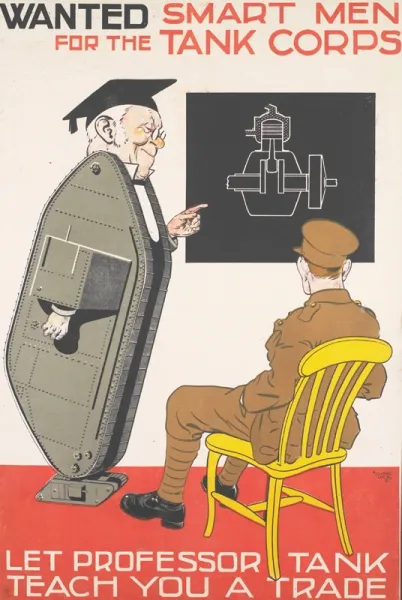
The Wanted – Smart Men for the Tank Corps poster was designed in 1917 to recruit soldiers for one of the most innovative units in World War I-the Tank Corps. As tanks were a new and crucial weapon in the war, the poster specifically appealed to men who were intellectually capable of operating and maintaining these machines. The poster features a direct call to action with the promise of joining a modern and elite military force. Original posters are valued at approximately $1,500 to $3,000.
The recruitment campaign for the Tank Corps was aimed at attracting men with technical skills and a willingness to participate in this new type of warfare. The creation of tanks revolutionized combat during World War I, and this poster’s appeal was effective in showcasing the cutting-edge nature of the Corps. It symbolized the technological advancement in warfare and the British military’s adaptability during the war. Today, this poster is an iconic piece of military history, representing the evolution of combat during World War I.
This article originally appeared on Avocadu.
